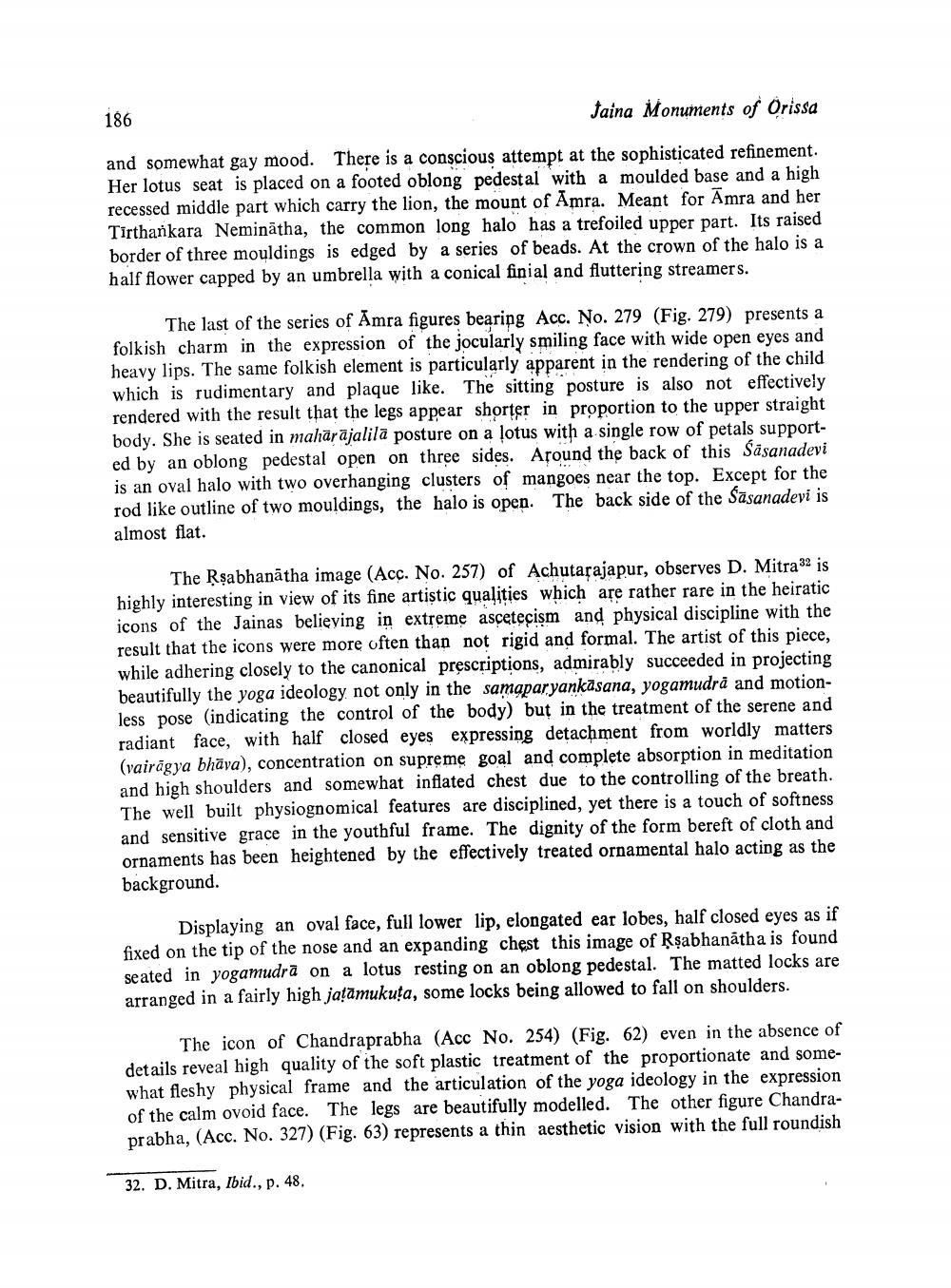________________
186
faina Monuments of Orissa
and somewhat gay mood. There is a conscious attempt at the sophisticated refinement. Her lotus seat is placed on a footed oblong pedestal with a moulded base and a high recessed middle part which carry the lion, the mount of Amra. Meant for Amra and her Tirthankara Neminātha, the common long halo has a trefoiled upper part. Its raised border of three mouldings is edged by a series of beads. At the crown of the halo is a half flower capped by an umbrella with a conical finial and fluttering streamers.
The last of the series of Amra figures bearing Acc. No. 279 (Fig. 279) presents a folkish charm in the expression of the jocularly smiling face with wide open eyes and heavy lips. The same folkish element is particularly apparent in the rendering of the child which is rudimentary and plaque like. The sitting posture is also not effectively rendered with the result that the legs appear shorter in proportion to the upper straight body. She is seated in mahārājalila posture on a lotus with a single row of petals supported by an oblong pedestal open on three sides. Around the back of this Sāsanadevi is an oval halo with two overhanging clusters of mangoes near the top. Except for the rod like outline of two mouldings, the halo is open. The back side of the Sāsanadevi is almost flat.
The Rşabhanātha image (Acc. No. 257) of Achutarajapur, observes D. Mitra32 is highly interesting in view of its fine artistic qualities which are rather rare in the heiratic icons of the Jainas believing in extreme ascetecism and physical discipline with the result that the icons were more often than not rigid and formal. The artist of this piece, while adhering closely to the canonical prescriptions, admirably succeeded in projecting beautifully the yoga ideology, not only in the samaparyankasana, yogamudrā and motionless pose (indicating the control of the body) but in the treatment of the serene and radiant face, with half closed eyes expressing detachment from worldly matters (vairāgya bhāva), concentration on supreme goal and complete absorption in meditation and high shoulders and somewhat inflated chest due to the controlling of the breath. The well built physiognomical features are disciplined, yet there is a touch of softness and sensitive grace in the youthful frame. The dignity of the form bereft of cloth and ornaments has been heightened by the effectively treated ornamental halo acting as the background.
Displaying an oval face, full lower lip, elongated ear lobes, half closed eyes as if fixed on the tip of the nose and an expanding chest this image of Rşabhanātha is found seated in yogamudrā on a lotus resting on an oblong pedestal. The matted locks are arranged in a fairly high jaļāmukuta, some locks being allowed to fall on shoulders.
The icon of Chandraprabha (Acc No. 254) (Fig. 62) even in the absence of details reveal high quality of the soft plastic treatment of the proportionate and somewhat fleshy physical frame and the articulation of the yoga ideology in the expression of the calm ovoid face. The legs are beautifully modelled. The other figure Chandraprabha, (Acc. No. 327) (Fig. 63) represents a thin aesthetic vision with the full roundish
32. D. Mitra, Ibid., p. 48.




